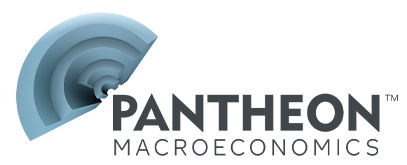- © 2025 Pantheon Macroeconomics
- Tel: +1 914 610 3830
Pantheon Macroeconomics
Best viewed on a device with a bigger screen...
Below is a list of our US Publications for the last 5 months. If you are looking for reports older than 5 months please email info@pantheonmacro.com, or contact your account rep
Please use the filters on the right to search for a specific date or topic.
Rates still too high for a sustained housing market renaissance.
Services inflation likely to remain in check.
Tariffs still pushing goods inflation higher, but services inflation looks soft under the hood.
Lower mortgage rates boost sales, but major headwinds remain.
Rock-bottom response rate casts doubt over reliability.
Shutdown hit limited for now, but strong headwinds remain.
An unreliable guide to growth in services spending.
Worsening job availability points to a further rise in the unemployment rate.
Economy's momentum looks strong in Q3 but unlikely to last.
Jump in new orders obscured underlying weakness.
Further falls in prices likely needed to get sales moving again.
A September easing looks nailed on, with more likely to follow.

U.S. Document Vault, independent macro research, Pantheon Macro, Pantheon Macroeconomics, independent research, ian shepherdson, economic intelligence,